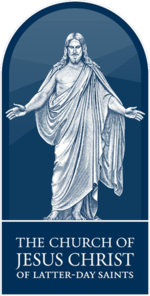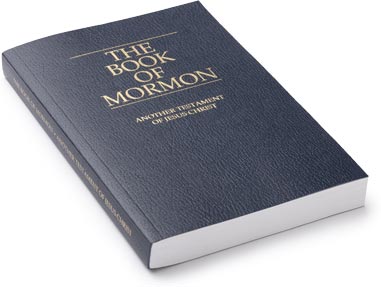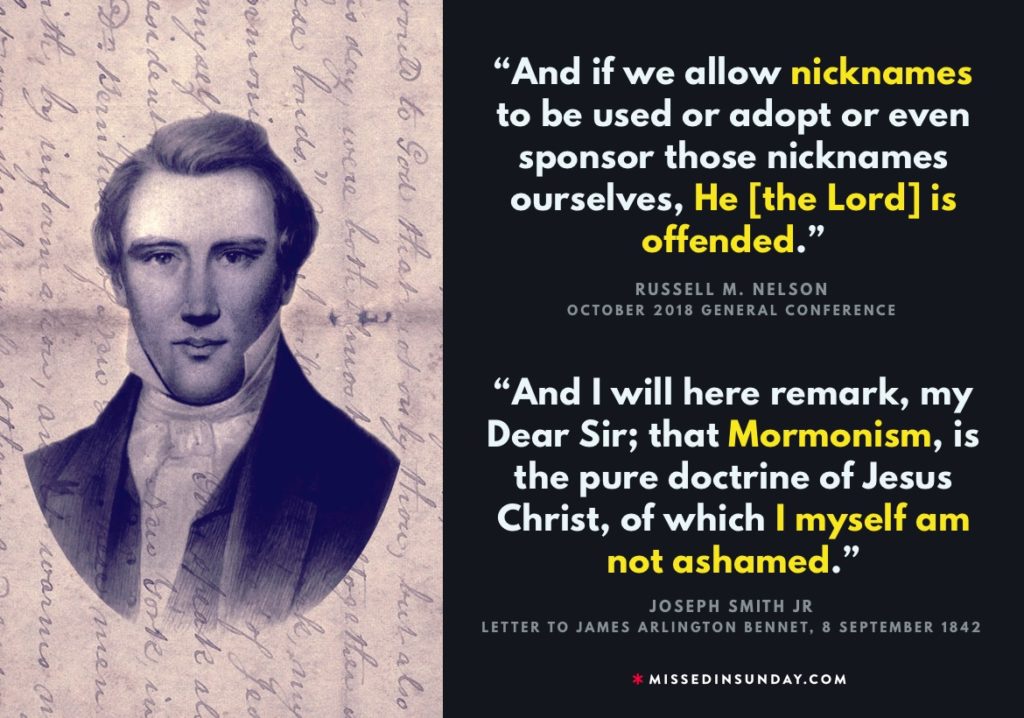Anyone following the process of rebranding Mormonism over the past ten years might be forgiven for thinking the faith is experiencing an identity crisis. The Mormon Church hired two big-name advertising agencies in 2009, Ogilvy & Mather and Hall & Partners, to find out what Americans think of the them. The feedback was overwhelmingly negative, but the church had an answer in a $6m dollar rebranding advertising campaign.

The ‘I’m a Mormon’ campaign featured church members, some famous, from around the world proudly declaring their pride in their Mormon faith. People were referred to mormon.org to view thousands of church members smiling into a camera and confidently declaring, ‘I’m a Mormon.’
This initiative was followed by a full-length ‘Meet the Mormons’ documentary that looked at the lives of six Mormons from around the globe. An excited 2011 ‘World Report’ (you have to admire their Chutzpah) the church wrote about ads on television spots, billboards, on buses and on the Internet. Rebranding Mormonism was a big thing just ten years ago. With Mitt Romney on the way to the Whitehouse, even British newspapers were noticing this ‘Mormon moment.’ This was the launch of mainstream Mormonism, and then…
Rebranding Mormonism…again
In January of 2018, a new man, Russell M Nelson, was sustained as the 17th prophet and president of the Church of Jesus Christ of Latter-day Saints, and he was a man with a lot on his mind. It is no secret the man had, since becoming an apostle in 1984, expressed concern about the use of what is, after all, a sobriquet…like ‘Christian’ (Acts 11:26) Christ didn’t call us Christians, nor did the apostles, it was a term given us by unbelievers. ‘I’m a Christian’ anyway.
Russell M Nelson had clearly spent a lot of time in his seat on the quorum of the Twelve Apostles thinking about things, and about how it might be if ever he got to run the show. At almost 94 years of age the time came, but he had little enough time to act. By March of 2019 everything was in place and a major rebranding, led by revelation he insisted, was officially launched. A letter went out from the first presidency to all levels of leadership across the church, from General Authorities to branch presidents and auxiliary leaders.
‘Using the Correct Name of the Church
The name of the Church was given by the Lord Himself when He instructed: “For thus shall my church be called in the last days, even The Church of Jesus Christ of Latter-day Saints” (Doctrine and Covenants 115:4). To be true to that charge, we are changing the names of many of the Church’s global communication channels…’
Oh, what a fuss and commotion as church employees, leaders and members alike scurried about trying to erase any and every mention of ‘Mormon’ ‘LDS’ and ‘Mormonism’ from the official channels of the church, even from everyday conversation. Everything Mormon is branded ‘Mormon,’ from the famous choir, to the way Mormons talk about themselves, especially in light of the previous $6m campaign.
Asked about their faith now, Mormons were no longer to proudly declare, ‘I’m a Mormon.’ According to the new man it offended Jesus and gave a victory Satan. So previous prophets offended Jesus and played into the hands of Satan? They were not wrong when they said in the letter:
This is a complex effort in numerous global languages and much work remains. We encourage all to be patient and courteous as we work together to use and share the proper name of The Church of Jesus Christ of Latter-day Saints throughout the world.
Rebranding Mormonism, or Repositioning the Church?
Of course, this is not so much a rebranding as a major attempt at changing the frame of reference of the church. Although Mormons have always insisted they are Christians they also took some pride in standing in a unique category. ‘We are neither Catholic, nor Protestant,’ they would confidently declare, ‘We are a restoration of the original New Testament Church.’ The whole point was the fact no one is like us.
Joseph Smith in his history, was clear. God himself had told him to join none of the churches because, ‘they were all wrong…all their creeds were an abomination in his sight; that those professors were all corrupt…they teach for doctrines the commandments of men, having a form of godliness, but they deny the power thereof.’ (JSH 1:19)
When it comes to branding, the whole idea was, you can be Mormon, or you can be wrong. The self-conscious distinctiveness of Mormonism is what gave it it’s urgency. It defied the world to challenge its authority, warned the world it dare not touch the Lord’s anointed.
If the world is going to see you in a more mainstream way you simply can’t make such strident statements; at least not in public. When people think of the church they shouldn’t think ‘Mormon,’ they should think ‘Christian,’ books about Mormonism should be in the Christian not the cult section, that’s the idea.

Even Moroni has gone, being replaced by Bertel Thorvaldsen,’s famous Christus, the original of which stands in The Church of our Lady, Copenhagen. Moroni still sits atop Mormon temples, but for how long?
Rebranding not Repenting
Notably, they have not, in this rebranding exercise, addressed anything of substance, such as significant and irreconcilable doctrinal differences. Peel back the label, look behind the marketing, and nothing has changed.
Restorationism
Mormonism is a restorationist religion. The attitude of the church towards the Christian churches is as it has always been. Mormon missionaries still tell our neighbours that we are apostate, abominable, corrupt, lip-servers. (Preach my Gospel, A Guide to Missionary Service, The Message of Restoration) Integral to the Mormon message are the words of Joseph Smith:
I was answered that I must join none of them, for they were all wrong; and the Personage who addressed me said that all their creeds were an abomination in his sight; that those professors were all corrupt; that: “they draw near to me with their lips, but their hearts are far from me, they teach for doctrines the commandments of men, having a form of godliness, but they deny the power thereof.”
Polygamy
Yes, polygamy is still, according to Mormon ‘scripture,’ an eternal principle (D&C 132), despite some referring to it as ‘the old law of polygamy.’ The latest guidance is:
‘If a husband and wife have been sealed and the wife dies, the man may have another woman sealed to him if she is not already sealed to another man. In this circumstance, the man does not need a sealing clearance from the First Presidency unless he was divorced from his previous wife before she died.’ (General Handbook)
Two temple marriages, two wives. In fact, the present prophet has two wives, his first wife waiting for him in the next world. He and Dantzel White were married in the Salt Lake Temple, August 31, 1945. Dantzel White Nelson died 12 February 2005, and he married Wendy L Watson in the Salt Lake Temple on April 6, 2006.
God an Exalted Man
The God of Mormonism is still an exalted man, and the purpose of life is to gain a physical body and become a god like him:
‘God is the Father of our spirits. We are literally His children, and He loves us. We lived as spirit children of our Father in Heaven before we were born on this earth. We were not, however, like our Heavenly Father, nor could we ever become like Him and enjoy all the blessings that He enjoys without the experience of living in mortality with a physical body…Adam and Eve were the first of God’s children to come to the earth. God created Adam and Eve and placed them in the Garden of Eden. Adam and Eve were created in God’s image, with bodies of flesh and bones.’ (Preach my Gospel, A Guide to Missionary Service, The Plan of Salvation)
Priesthood
Mormonism still teaches the essential nature of priesthood and the saving ordinances administered by the priesthood, held exclusively by the Mormon Church:
‘Priesthood is the power and authority given to man to act in God’s name for the salvation of His children…The Church of Jesus Christ of Latter-day Saints is led by Jesus Christ through apostles and prophets. These are righteous men who are called of God and given the priesthood. Anciently Christ ordained His Apostles and gave them the priesthood. That authority was lost when the people rejected the gospel and killed Christ and the Apostles.
Priesthood authority was restored in 1829 when John the Baptist appeared to the Prophet Joseph Smith and Oliver Cowdery. He laid his hands on their heads and conferred on them the Aaronic Priesthood. A short time later Peter, James, and John of the original Twelve Apostles laid their hands on Joseph Smith and Oliver Cowdery and conferred upon them the Melchizedek Priesthood, which Peter, James, and John had received from Jesus Christ. (Preach my Gospel, A Guide to Missionary Service, Laws and Ordinances)

The Book of Mormon
Missionaries are taught, ‘The Book of Mormon, combined with the Spirit, is your most powerful resource in conversion. It provides powerful evidence for the divinity of Christ. It is also proof of the Restoration through the Prophet Joseph Smith. An essential part of conversion is receiving a witness from the Holy Ghost that the Book of Mormon is true.’
Joseph Smith said that the Book of Mormon, ‘is the keystone of our religion.’ (Book of Mormon, Introduction.) On another occasion he stated: “Take away the Book of Mormon and the revelations, and where is our religion? We have none” (Minutes and Discourse, 21 April 1834, Church History Library, The Church of Jesus Christ of Latter-day Saints, Salt Lake City). (Preach my Gospel, A Guide to Missionary Service, What is the Role of the Book of Mormon?)
This from a religion anxious to be identified as Christian. Take away the Book of Mormon and the revelations of Mormonism, and you are left with the Bible. I don’t believe books about Mormonism will move from the cult and into the Christian section anytime soon. Certainly, no Christian bookseller will be in a hurry to stock and sell the Book of Mormon or Mormon books.

“You can’t scrub ‘Mormon’ out of Mormon history,” W. Paul Reeve
The problems and challenges thrown up by an obsession with a name are eloquently spelled out in a New York Times article of June 2019.
‘All of this has left adherents with a bit of whiplash,’ it reports, ‘especially following the church’s 2011 “I’m a Mormon” advertising campaign, in which leaders went all in by placing ads on buses and billboards in New York’s Times Square and plastering the internet with profiles of tens of thousands of Mormons.’
The last word, however, must go to the eminently sensible president of the Mormon History Association. The New York Times reports:
‘Leaders at the Mormon History Association, whose members study the full spectrum of traditions connected to Joseph Smith — who published the Book of Mormon in 1830 — took just five minutes to decide to keep their name at a recent board meeting.
“You can’t scrub ‘Mormon’ out of Mormon history,” said W. Paul Reeve, the group’s president.’

